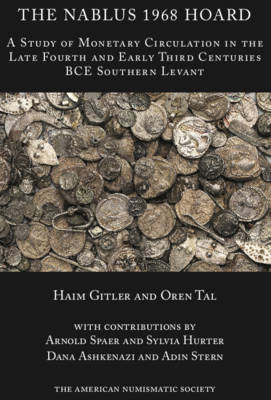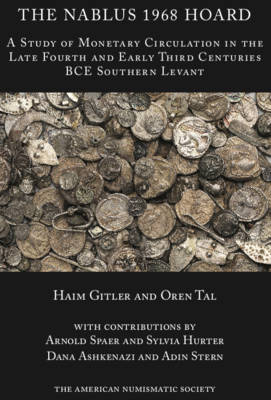
- Afhalen na 1 uur in een winkel met voorraad
- Gratis thuislevering in België vanaf € 30
- Ruim aanbod met 7 miljoen producten
- Afhalen na 1 uur in een winkel met voorraad
- Gratis thuislevering in België vanaf € 30
- Ruim aanbod met 7 miljoen producten
Zoeken
The Nablus 1968 Hoard
A Study of Monetary Circulation in the Late Fourth an Early Third Centuries Bce Southern Levant
Haim Gitler, Oren Tal
€ 81,62
+ 163 punten
Omschrijving
The Nablus 1968 Hoard is the largest late Persian/early Hellenistic period coin and jewelry hoard recorded from the southern Levant and the largest known hoarded assemblage of Samarian coins. This study provides a detailed catalogue of all the coins and pieces of jewelry the authors managed to record. In addition, the authors discuss the hoard and its context, its burial date, a synopsis of the history and archaeology of the Persian period province of Samaria, a discussion on the hoard's Phoenician, Samarian, Athenian-styled, Philistian, and Yehud coins, Athenian tetradrachms and the few overseas Greek and Cypriot issues belonging to the hoard. The commentary chapter is followed by detailed archaeometallurgical studies on selected Samarian and Athenian-style coins and selected pieces of jewelry. There are also appendixes There are also two appendixes, one presenting a method for determining dies links and the second offering a glossary of relevant terms. The hoard's composition reflects the monetary circulation of the late fourth and early third centuries BCE southern Levant.
Specificaties
Betrokkenen
- Auteur(s):
- Uitgeverij:
Inhoud
- Aantal bladzijden:
- 256
- Taal:
- Engels
- Reeks:
Eigenschappen
- Productcode (EAN):
- 9780897223607
- Verschijningsdatum:
- 10/10/2019
- Uitvoering:
- Hardcover
- Formaat:
- Genaaid
- Afmetingen:
- 155 mm x 239 mm
- Gewicht:
- 839 g

Alleen bij Standaard Boekhandel
+ 163 punten op je klantenkaart van Standaard Boekhandel
Beoordelingen
We publiceren alleen reviews die voldoen aan de voorwaarden voor reviews. Bekijk onze voorwaarden voor reviews.








